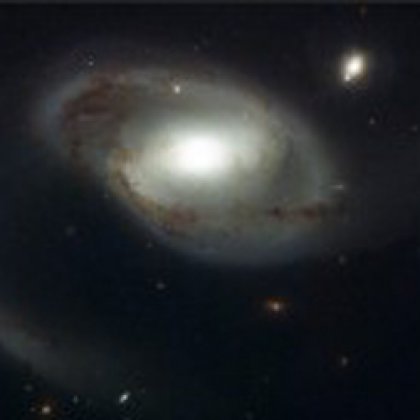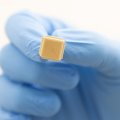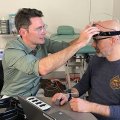
UQ astrophysicist Dr Tamara Davis, together with researchers from Denmark, has earned 4th spot on Physics World magazine’s top 10 scientific breakthroughs in 2011, for developing a groundbreaking method to measure cosmic distances in the universe using light from quasars.
Determining accurate distances to celestial objects is the key to establishing the age and energy density of the universe. Quasars, which are active galaxies fuelled by the black hole at their heart, are found just about everywhere in the universe and outshine almost all other sources of light, making them ideal for measuring these distances.
“I was stunned to be chosen amongst the top ten breakthroughs of the year, partly because this is a discovery of a technique, rather than a fundamental discovery about the
universe,” Dr Davis said.
“However, they’re acknowledging this as a breakthrough because every time a new way to
measure the universe is discovered, it seems new knowledge soon follows – the discovery that supernovae could be used as distance indicators led to the discovery of the acceleration of the universe, and this year’s Nobel prize in physics.”
Dr Davis, from UQ’s School of Mathematics and Physics, worked with researchers Dr Darach Watson, Dr Kelly Denney and Dr Marianne Vestergaard at the Niels Bohr Institute in Denmark.
The secret to calculating astronomical distances is to be able to know how bright something is intrinsically. In the 1990s, it was discovered that supernovae could be used as “standard candles”.
The team's new discovery shows that quasars can be used in a similar way, and as quasars are more luminous than supernovae they can potentially be used to determine much larger distances.
“Quasars don’t disappear after a couple of months like supernovae do. That means that in addition to being observed out to greater distances, repeat observations can be conducted to make the measurements more accurate,” Dr Davis said.
Physics World is a specialist magazine of UK’s Institute of Physics. In deciding the top 10 breakthroughs of the year, the editorial team looked at factors such as the fundamental importance of the research, its significant advance in knowledge, its strong connection between theory and experiment, as well as its general interest to all physicists.
“We are particularly impressed with how you and your colleagues have expanded astronomers’ ability to look back in time using (quasars), objects that are ubiquitous in the universe,” reads the citation from Physics World.
Dr Davis is an ARC Future Fellow, and winner of numerous prestigious awards, including the AIP Women in Physics Lecturer award (2011), L'Oréal Women in Science Award (2009), the Louise Webster Award (2009), and most recently, the overall winner of the 2011 Queensland Young Tall Poppy Science Awards.
Media: Dr Tamara Davis (0432 526 989, tamarad@physics.uq.edu.au) or Aarti Kapoor (07 3346 9935, a.kapoor@uq.edu.au)
.jpg)









